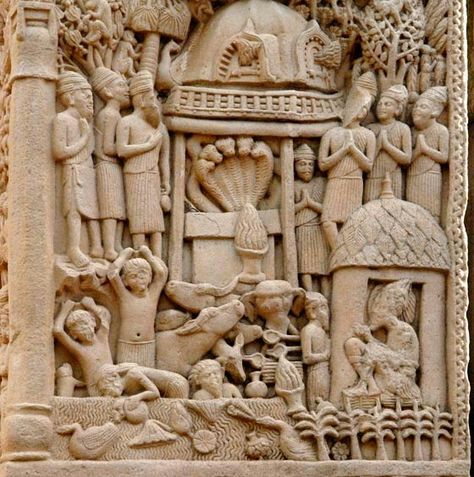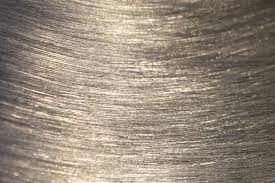We focus on unique needs of our customers by featuring internationally recognized dealers and a wide range of antiques products. We also have a fabulous collection of antique and estate jewelry. The appreciation of our business history, along with our love of the business, keeps us enthusiastic about its future. Our goals Is to furnish timely technical, economic, environmental and educational information for the benefit of our members. In addition, Sinopec Antique Organization provides the networking opportunities necessary for success in today’s global marketplace. Whatever your current profession, if your work involves precious metals, we invite you to become a Sinopec Antique Organization member.
Boeing International Antique FLOW SYSTEM
Tester will test the item thrice in interval of an hour with free hand. Spot must be near road side (not for herbal) where phone & car facilities must be available. No one can force tester to move interior place to test the article. The payment will be started after 2-3 hours of the final inspection The full responsibility of the Article is upon the Party & the responsibility of the payment is upon Second Party. The service charges will be forfeited if the Article proves duplicate or first party fails to show the Article, at the same time the Agreement shall be cancelled. Second party must pay ten times of the deposited amount as penalty charges if fails to pay the payment within mentioned time. The Tester’s decisions will be final at the spot. The Article shall be kept at joint-custody after same day payment. The final Agreement & final payment schedule will be made sitting at joint custody. Inspection must be in between 10 a.m. to 2 p.m. Please note, chemicals once issued non-returnable, thus cost of the chemicals are non-returnable, however, the cost of the kits will be refunded if is returned in tact without use, within 24 hours, if it is not returned in time, the cost of the kits will be forfeited also.
Boeing Antique Terms & Conditions
We believe in smooth operation to make any deal done so that our customers should not face any problems, and as a buyer, we also strive to fulfill whatever promises we made. From 1990 to till date we have bought around antique products with the value of 750 million dollars and accomplished work with smooth operational techniques. Boeing Antique We can buy and sell all antique and super antique products and are registered under the law. We strictly follow our policy to deal with the products and different places across the globe. Kindly go through our Terms and Conditions section for further understanding regarding the algorithm of work workflow algorithm. We ensure our customers with a promising and professional approach regarding any deal of the products buying or selling across the world, and give our best endeavor to accomplish it on any level
The Metals we dealt in
We deal in almost all the metals which are available in the earth. Here are some specification like: Copper, Brushed Metal, Aluminium, Bronze, Gold, Iron, Pewter Antique metals refer to metals that are old and often have historical or cultural significance. These metals may have been used in various applications such as art, architecture, weaponry, and everyday objects. Some common antique metals include: These antique metals often acquire a distinct patina or aging over time, adding to their aesthetic appeal and historical value. Collectors often seek out antique metal objects for their beauty, craftsmanship, and historical significance.
The Metals we dealt in: Copper
Copper is a chemical element with the symbol Cu (Latin: cuprum) and atomic number 29. It is a ductile metal with excellent electrical conductivity and is rather supple in its pure state and has a pinkish luster which is (beside gold) unusual for metals which are normally silvery white. It finds use as a heat conductor, an electrical conductor, as a building material, and as a constituent of various metal alloys. Copper is an essential trace nutrient to all high plants and animals. In animals, including humans, it is found primarily in the bloodstream, as a co-factor in various enzymes, and in copper-based pigments. However, in sufficient amounts, copper can be poisonous and even fatal to organisms. Copper holds a significant place in the realm of antique metals due to its long history of use by various civilizations, its durability, and its unique aesthetic qualities. Here’s some more information about copper in the context of antiques: Overall, antique copper items offer a tangible connection to the past, providing insights into the lifestyles, technologies, and artistic traditions of earlier generations. Their enduring appeal makes them prized possessions for collectors and enthusiasts alike.
The Metals we dealt in: Brushed Metal
Brushed metal is metal that has been abraded (“brushed”), usually with a fine grit sandpaper. The brushing gives the metal a distinctive look, as it retains some but not all of its metallic lustre and is given a pattern of very fine lines. It can be compared to metal with several small scratches all running in the same direction. Commonly used metal for brushing include stainless steel and nickel. Brushed metal refers to a finishing technique applied to metals to create a textured surface characterized by fine parallel lines or “brush strokes.” This technique is achieved by brushing the metal surface with an abrasive material, typically in a consistent direction, which results in a uniform pattern of fine scratches. Brushed metal finishes can be applied to various metals, including stainless steel, aluminum, brass, and bronze. In the context of antiques, brushed metal finishes might not be as commonly found as other types of finishes due to the historical techniques and preferences prevalent during different periods. However, modern pieces designed to evoke antique aesthetics may incorporate brushed metal finishes to simulate the look of aged or weathered metal surfaces. Here are some points regarding brushed metal in the context of antique or vintage items: Overall, while brushed metal finishes may not have been widespread in historical antiques, they can play a role in contemporary designs aimed at capturing the essence of antique aesthetics or in restoration efforts to preserve the original character of vintage items.
The Metals we dealt in: Aluminium
Aluminum or aluminum is a silvery white and ductile member of the boron group of chemical elements. It has the symbol Al; its atomic number is 13. It is not soluble in water under normal circumstances. Aluminum is the most abundant metal in the Earth’s crust, and the third most abundant element therein, after oxygen and silicon. It makes up about 8% by weight of the Earth’s solid surface. Aluminum is too reactive chemically to occur in nature as the free metal. Instead, it is found combined in over 270 different minerals. The chief source of aluminum is bauxite ore. Aluminum, while not traditionally considered an “antique” metal due to its relatively recent discovery and widespread industrial use, still holds historical significance and can be found in antique items, albeit to a lesser extent compared to older metals like bronze, copper, or silver. Aluminum was once considered a precious metal, even more so than gold and silver, due to the difficulties involved in its extraction and refinement. In the 19th century, it was extremely expensive and was used sparingly for decorative purposes, such as jewelry and tableware, particularly during the Victorian era. One famous example of aluminum’s historical value is the capstone of the Washington Monument in the United States, which was made of aluminum in 1884 to showcase the metal’s prestige. At that time, aluminum was valued similarly to silver. However, with the invention of more efficient extraction methods, such as the Hall-Héroult process in the late 19th century, aluminum became much cheaper to produce, leading to its widespread use in various industries, including construction, transportation, and packaging. While antique items made entirely of aluminum might be less common compared to other metals, there are still collectors interested in aluminum artifacts from the late 19th and early 20th centuries, appreciating them for their historical significance and the craftsmanship of the time. These may include aluminum utensils, decorative pieces, and even early aluminum cookware.
The Metals we dealt in: Bronze
Bronze holds a significant place in the realm of antiques due to its historical importance, durability, and versatility. Here are some key points about bronze in respect to its antique value: Overall, bronze holds a special place in the world of antiques due to its timeless beauty, historical significance, and enduring appeal to collectors and enthusiasts alike.
The Metals we dealt in: Pewter
Pewter holds a significant place in the realm of antique metals due to its long history, versatility, and distinctive appearance. Here’s a closer look at pewter in respect to antiques: Overall, antique pewter holds a special place in the world of antiques, cherished for its historical significance, craftsmanship, and enduring beauty. Collectors and enthusiasts continue to appreciate and preserve these timeless treasures for future generations to enjoy.
The Metals we dealt in: Silver
Silver holds a significant place in the realm of antiques due to its beauty, versatility, and historical importance. Here’s a closer look at silver in respect to antiques: Overall, silver’s enduring allure as a precious metal, combined with its rich history and aesthetic appeal, ensures its continued prominence in the world of antiques.










